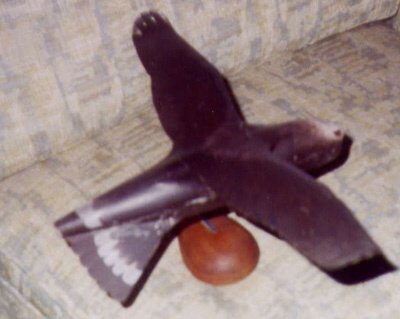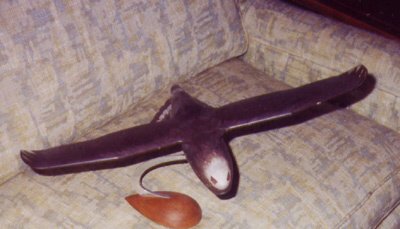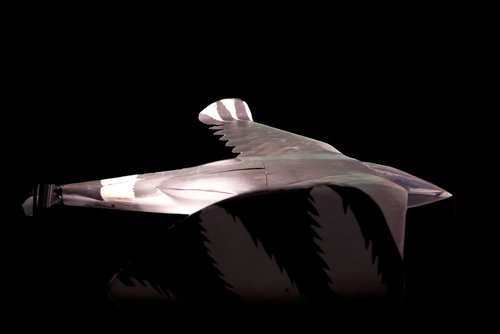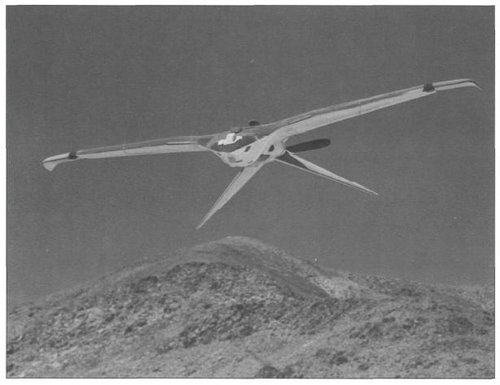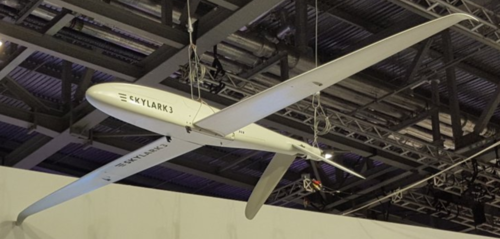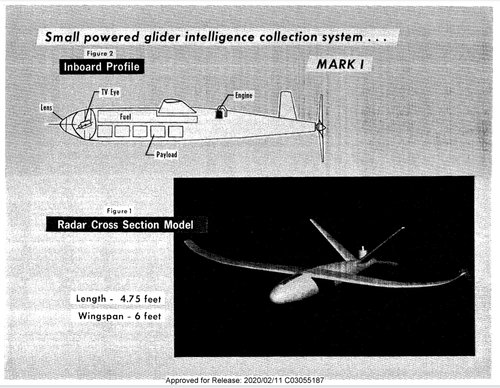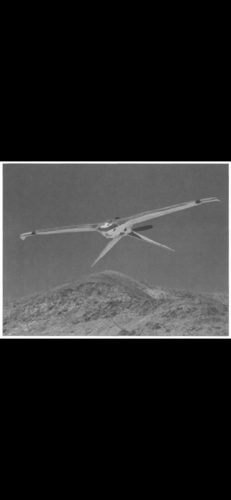- Joined
- 6 August 2007
- Messages
- 3,885
- Reaction score
- 5,906
AQUILINE was a CIA project to develop a low-flying surveillance RPV in the late 60s/early 70s.
From "Air Force UAVs The Secret History":
"The CIA developed a few UAVs through the Directorate of Science and Technology’s Office of Development and Engineering rather than through the NRO. The first was a stealthy propeller-driven, low altitude, anhedral-tailed UAV called Aquiline and designed for low-level electronic surveillance of the Chinese nuclear program. Aquiline was designed by McDonnell Douglas in the late 1960s and advanced to flight testing, but never saw operational use due to reliability problems. The aircraft was to be controlled by data link from a high-flying U-2. Jeffrey T. Richelson interview, Oct. 23, 1999; Sherwin Arculis interview, Feb. 21, 1999. For an upside-down picture of Aquiline (the McDonnell-Douglas Mark II), see Kent Kresa and William F. Kirlin, “The Mini-RPV: Big Potential, Small Cost,” Aeronautics and Astronautics, September 1974: 61."
AQUILINE had a 6-foot wingspan and was made to actually look like a bird. It was to follow power and communication lines and record data leaking out of them (sort of a flying IVY BELLS). The program was flight tested at Groom Lake between July 1970 and late 1971.
John Meierdierck was in charge of the CIA side of the program, and provides the best account of it here (including the attached photos of a model):
Well worth reading.
From "Air Force UAVs The Secret History":
"The CIA developed a few UAVs through the Directorate of Science and Technology’s Office of Development and Engineering rather than through the NRO. The first was a stealthy propeller-driven, low altitude, anhedral-tailed UAV called Aquiline and designed for low-level electronic surveillance of the Chinese nuclear program. Aquiline was designed by McDonnell Douglas in the late 1960s and advanced to flight testing, but never saw operational use due to reliability problems. The aircraft was to be controlled by data link from a high-flying U-2. Jeffrey T. Richelson interview, Oct. 23, 1999; Sherwin Arculis interview, Feb. 21, 1999. For an upside-down picture of Aquiline (the McDonnell-Douglas Mark II), see Kent Kresa and William F. Kirlin, “The Mini-RPV: Big Potential, Small Cost,” Aeronautics and Astronautics, September 1974: 61."
AQUILINE had a 6-foot wingspan and was made to actually look like a bird. It was to follow power and communication lines and record data leaking out of them (sort of a flying IVY BELLS). The program was flight tested at Groom Lake between July 1970 and late 1971.
John Meierdierck was in charge of the CIA side of the program, and provides the best account of it here (including the attached photos of a model):
Well worth reading.

